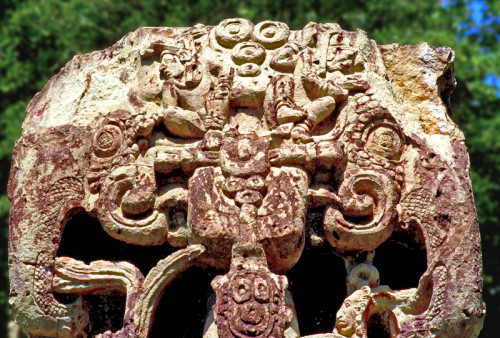
W1121T: Top of Stela B Of all the miscellanea of Mesoamerica, the Elephants of Copán found on Stela B have to rank the highest. Once someone points them out, it is impossible not to see the elephants and there seems to be no other logical explanation. Elephants never existed in the Americas and so their presence at Copán on Stela B, which was carved for ruler 18 Rabbit in 731AD, has become a hotly debated topic – especially amongst ancient trans-oceanic contact theorists – and the results of these debates make interesting reading.
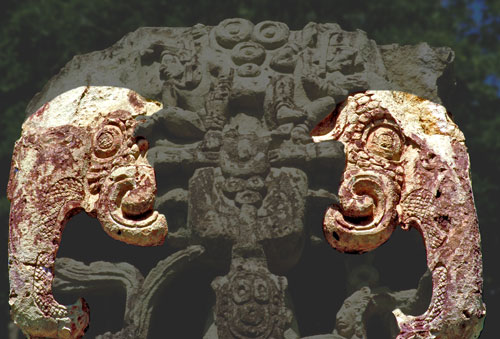
W1121BE: Elephants on Top of Stela B The Elephants of Copán stand out quite clearly on the top corners of Stela B (they are highlighted in fig. W1121BE). They clearly have curling tusks, a long trunk, and their eyes are placed perfectly. Yet some historians have been quoted as saying they are macaws, which were highly revered at Copán and feature on many monuments there. However, it is impossible to see how these creatures are meant to represent macaws, and so this argument has only added fuel to the fire for those arguing that they are elephants.
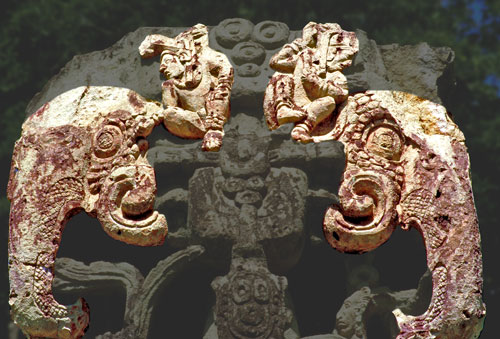
W1121BEM: Elephants with Riders It is also argued that the elephants have men riding on their backs (see fig. W1121BEM). This is very reminiscent of India where the first recorded use of domesticated elephants is from the 1st century BC. Trans-oceanic contact theorists argue that people visited from Asia bringing with them art that featured elephants. This idea is supported appearance of dragons, known in Mesoamerica as Serpent-Monsters, such as the double-headed serpent/dragon that can be seen in 18-Rabbits hands on Stela B.
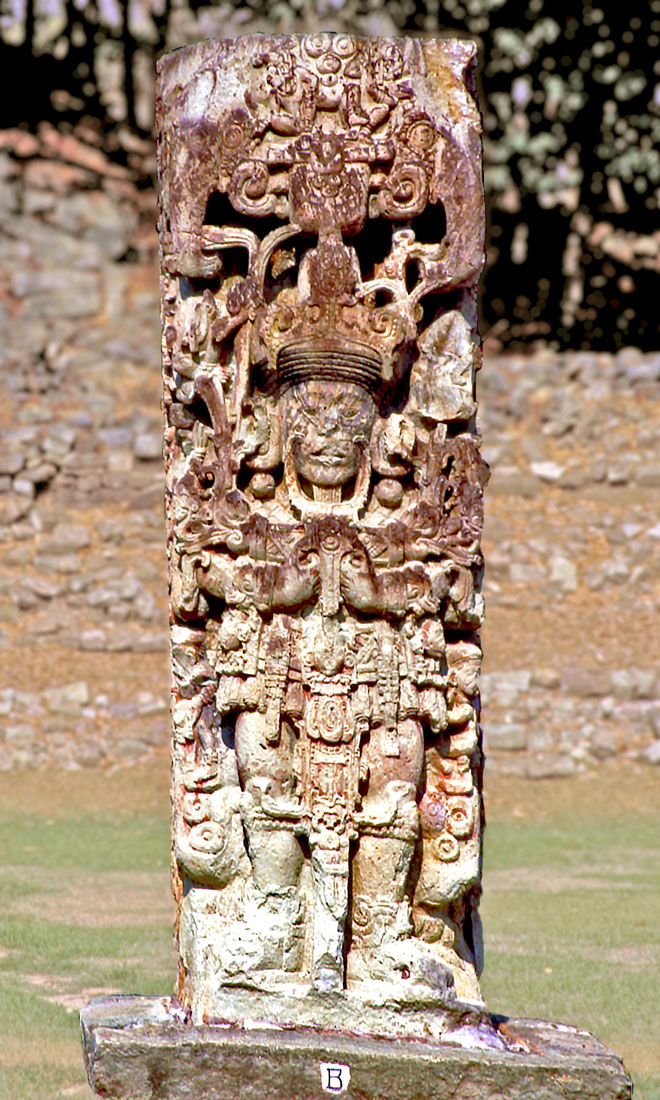
W1121B: Stela B Further Further weight is added to the Asian contact theory by 18-Rabbit’s turban and a Chinese looking crown. He also has a beard, which is another anomaly as the Maya were unable to grow beards – therefore, it is thought that this is a fake appendage made of shells and worn ceremonially – like the Pharoanic beards of Egypt. The stelae were designed to reflect the rulers’ divine omnipotence and all these odd components must be symbols of power known to the Mayan public. Stela B is one of a number of stelae commissioned by 18-Rabbit in a new style of mid-relief known as “wraparound” or “in the round”. These stelae were revolutionary, incredibly expensive, and very well planned out. Stela B is a fantastic example of how adept Copan’s craftsmen were at packing every square inch of their monuments with ornate iconography that could be read like a book. The imagery that surrounds the king is deeply complex – bits of plant indicate he is the Maize God, branches tell us that he is the embodiment of the sacred tree, circles tell us he is the giver of water and the serpent bar tells us he holds the cosmos in his hands. By merging the strengths and attributes of different things together, the Maya were able to describe godly powers, create supreme-beings and even list events without writing a single word.
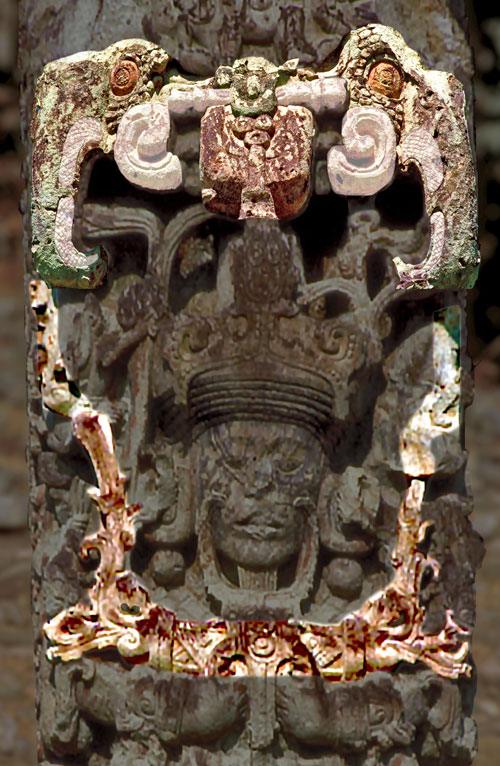
W1121BH: Monster MouthThe Elephants of Copan are one such amalgamation of animal attributes. The most apparent feature is the spiralling tusks, these are found regularly on Mayan monuments and are in fact the fangs of the serpent monster. If you look closely between the tops of these fangs you can see a row of teeth (shaded white in fig. W1121BEM). At the centre of this row of teeth is the nose, and below that appears to be a tongue. The three circles on the tongue are found regularly at Copán and thought to relate to the spots of the toad or the jaguar – or a symbiosis of both. On each of the “elephant trunks” there are two fang shapes which are cross-hatched, possibly to tell us they belong to a reptilian – these are also found on Altar M (fig. W1107C) and Zoomorph P at Quirigua (fig. W0975). If you look closely around the eye, it is clearly surrounded by reptilian scales and and the projecting eye-socket is very crocodilian or toad-like (this is more visible on the less damaged right-side). It is then clear that the elephant trunks are actually the jaw of a serpent-monster, which hangs down wide open and continues downward to the double-headed serpent bar, which rests in 18-Rabbit’s hands, and forms the lower jaw.
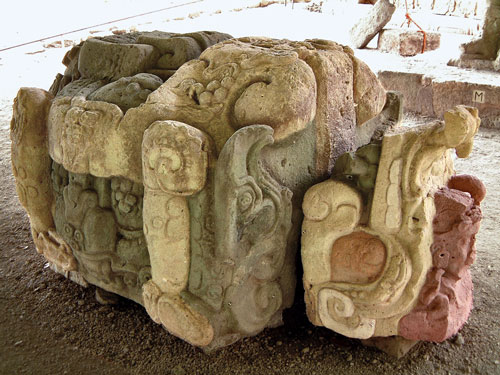
W1107C: Altar M (Coloured)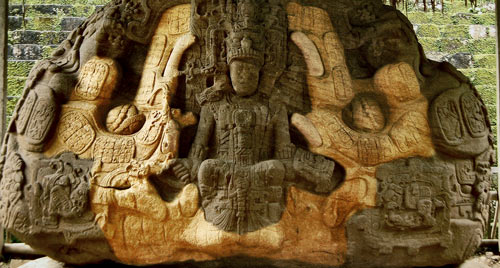 W0975: Quirigua – Zoomorfo P This completes a fairly common sight; the king resting in the jaws of a creation monster. Admittedly, this monster is harder to distinguish than the elephants, but this is because we recognise elephants, but have no idea what this monster looks like. Altar M (fig. W1107C) and Zoomorph P at Quirigua (fig. W0975) are far easier examples to understand and provide an additional insight into how the Maya composed their monsters using “short-hand” iconography to marry powerful features together to create new beasts – in fact no two beasts ever appear to be the same, which may bear meaning in itself. It is quite possible that the beastly components are linked to time, events or cosmology, and are combined to define a specific occasion and not just a complicated monstrous beast. The common theory is that placing the ruler in the jaws of a godly beast is designed to associate him with a divine birth. But, if the composition of the beast is indicative of a time or event, then it is quite possible the image of the ruler emerging from its jaws is actually designed to tell us about the timing of whatever the Stela’s topic is – this could be his birth, and this serpent monster could be 18-Rabbits “star-sign”. However, it could also indicate the “star-sign” of his accession to the throne, or the “star-sign” of a battle he won, or any other event in history.
W0975: Quirigua – Zoomorfo P This completes a fairly common sight; the king resting in the jaws of a creation monster. Admittedly, this monster is harder to distinguish than the elephants, but this is because we recognise elephants, but have no idea what this monster looks like. Altar M (fig. W1107C) and Zoomorph P at Quirigua (fig. W0975) are far easier examples to understand and provide an additional insight into how the Maya composed their monsters using “short-hand” iconography to marry powerful features together to create new beasts – in fact no two beasts ever appear to be the same, which may bear meaning in itself. It is quite possible that the beastly components are linked to time, events or cosmology, and are combined to define a specific occasion and not just a complicated monstrous beast. The common theory is that placing the ruler in the jaws of a godly beast is designed to associate him with a divine birth. But, if the composition of the beast is indicative of a time or event, then it is quite possible the image of the ruler emerging from its jaws is actually designed to tell us about the timing of whatever the Stela’s topic is – this could be his birth, and this serpent monster could be 18-Rabbits “star-sign”. However, it could also indicate the “star-sign” of his accession to the throne, or the “star-sign” of a battle he won, or any other event in history.
Finally, whilst the Elephants of Copán are certainly the gaping jaws of the Serpent-Monster, it doesn’t rule out the possibility that they are also elephants. At Quirigua, Zoomorph B shows the ruler, Cauac Sky, emanating from the jaws of three different beasts, which are all individually drawn yet share features in a most complex and profound way (see figs. W0998J, W0998S & W0999C) .
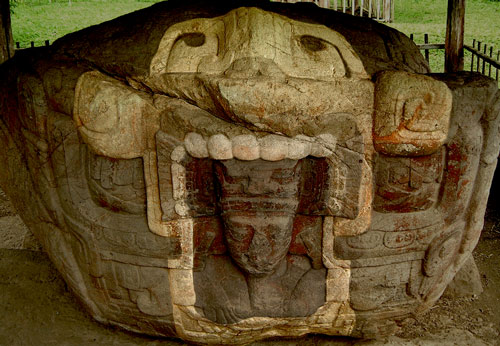
W0998J: Jaguar of Zoomorph B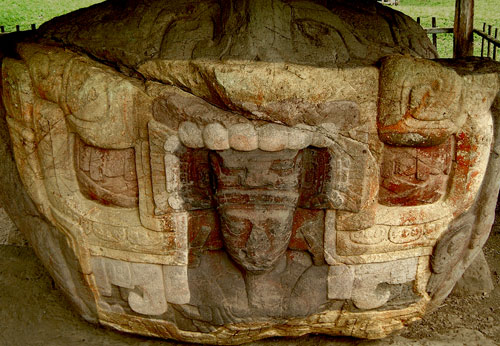
W0998S: Snake of Zoomorph B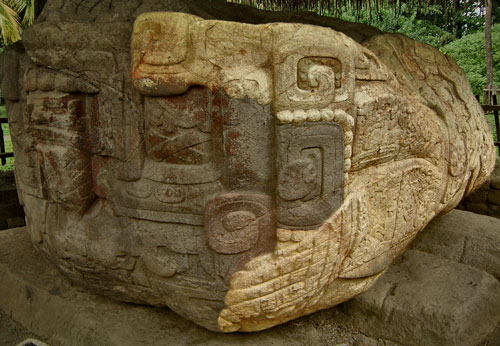
W0999C: Crocodile of Zoomorph B
So the Maya were certainly keen on using the same elements to portray multiple beasts and whilst the Monster Mouth is a certainty, it doesn’t mean the Elephant idea is completely out of the running – after all, there is the turban, the Chinese crown/headdress and the fake beard to take into account!

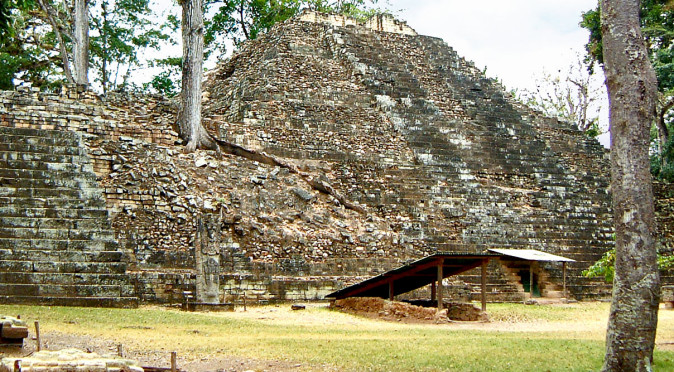
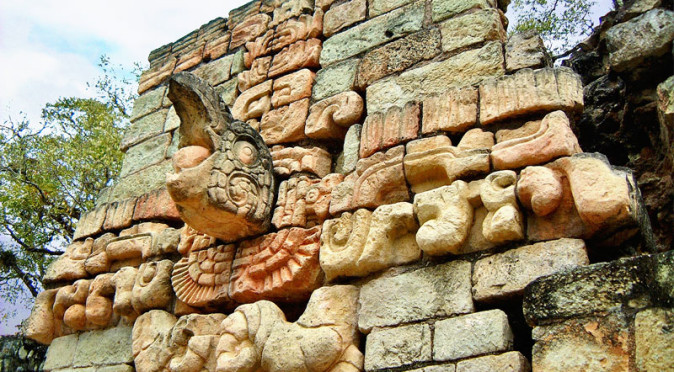
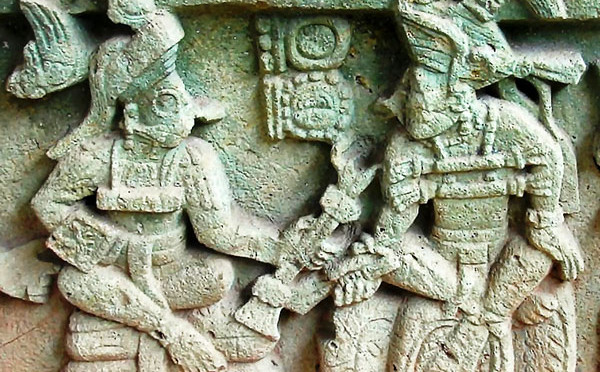
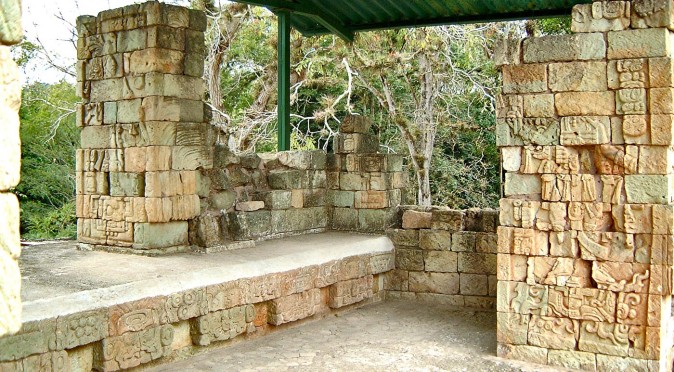
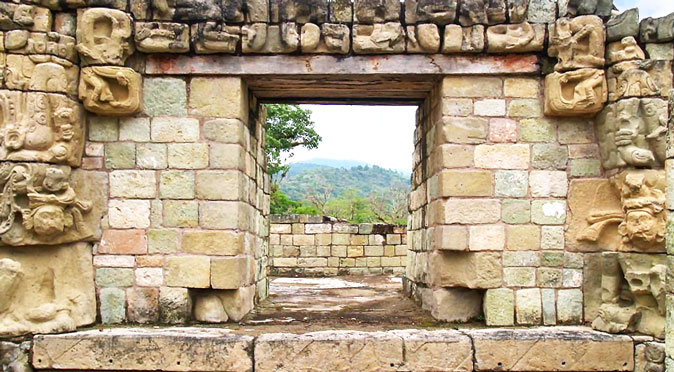
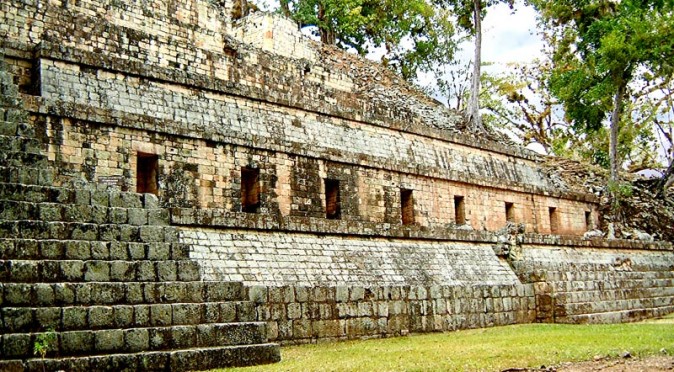
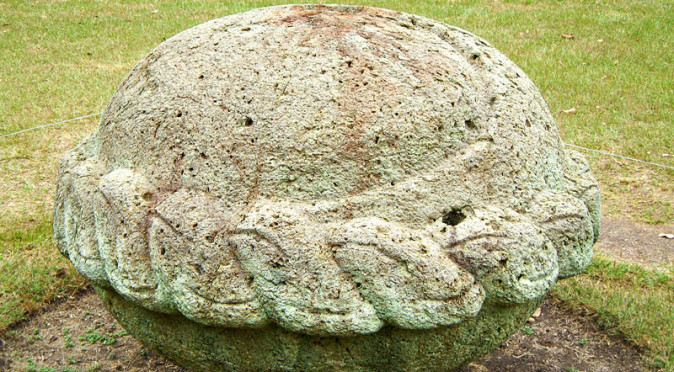
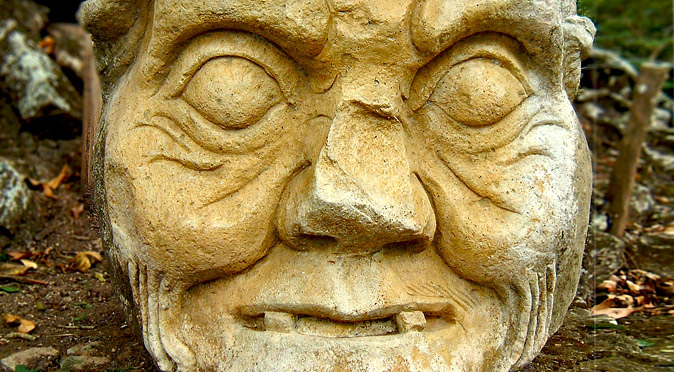
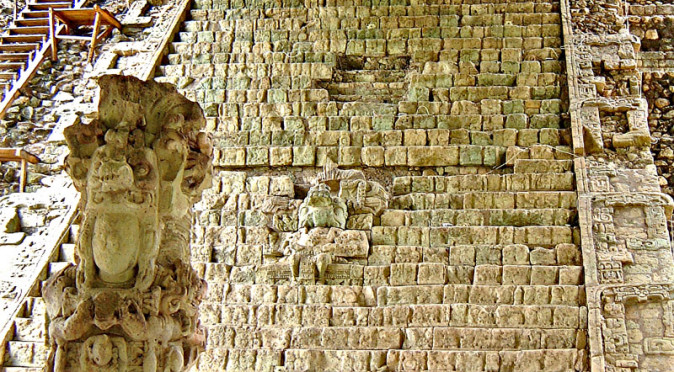
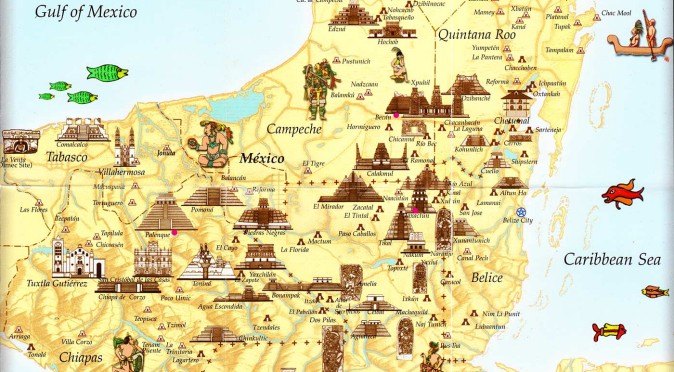
One thought on “The Elephants of Copán”